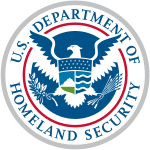 | |
| Agency overview | |
|---|---|
| Formed | 2003 |
| Jurisdiction | United States |
| Headquarters | DHS Nebraska Avenue Complex, Washington D.C. |
| Agency executive |
|
| Parent agency | DHS Science and Technology Directorate |
| Website | DHS Border and Maritime Security Division |
The Border and Maritime Security Division (BMD) is a division of the Science and Technology Directorate of the United States Department of Homeland Security. Within the Homeland Security Advanced Research Projects Agency, BMD develops tools and technologies that improve the security of the United States's land borders and waterways. [1]
